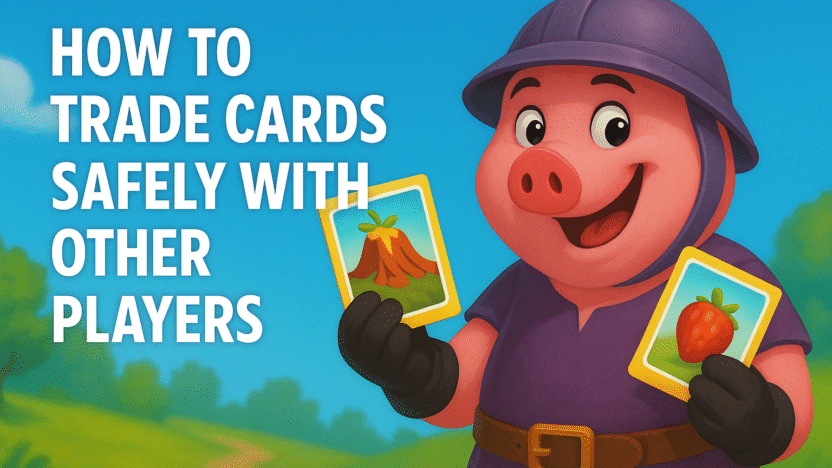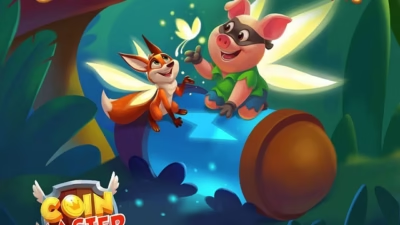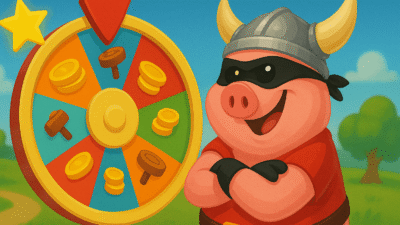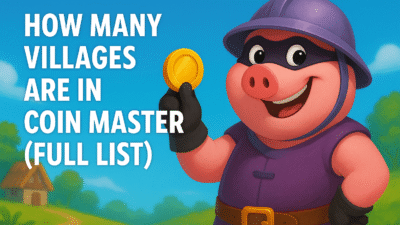Let’s set a scene. You’ve been hunting for it for three months. It’s the last card you need to complete the ‘Creatures’ set. That elusive, majestic, 5-star “Martian Lettuce.” It’s the only thing standing between you and a glorious payout of 2,000 spins and a mountain of XP. Your teammates don’t have it. Your friends don’t have it.
But then, you see it. A post in a trading group. A player has a spare Martian Lettuce. Your heart leaps. You send a frantic DM. They reply. A deal is struck. They seem nice enough. They ask you to send your spare “Fighting Monk” card first, a rare 5-star in its own right. In your excitement, you agree. You select the card, you find their name, you hit “Send.” The card flies into the digital ether.
You wait. And wait. You send a polite, “Sent! Your turn :)” message. No reply. You check their profile. The post is gone. You try to message them again. “This person is unavailable on Messenger.”
Your blood runs cold. A slow, sickening feeling creeps into your stomach as you realize the truth. You’ve been had. Scammed. Robbed in broad daylight on the digital frontier. Your Fighting Monk is gone forever, and the Martian Lettuce was never real.
If this story makes you shudder with a grim sense of familiarity, or if you’re new to the trading scene and terrified of this exact scenario, then welcome. You have found your bible. This is the ultimate survival guide to the high-stakes, unregulated, and absolutely essential world of Coin Master card trading.
The greatest rewards in this game—the completed sets, the finished albums, the thousands of bonus spins—are locked behind a door that can only be opened with trading. But the path to that door is riddled with pitfalls, con artists, and digital highwaymen. Today, we arm you for the journey. We’re going to turn you from a trusting tourist into a savvy, untouchable Card Shark.
Part 1: The Lay of the Land – Why Safe Trading is the Real Endgame
First, let’s establish a fundamental truth. Coin Master isn’t really a game about building villages. That’s just the side quest. The true endgame, the long-term obsession that separates the casuals from the lifers, is completing the Card Album. The villages come and go, but the album is your life’s work.
The developers, in their infinite and mischievous wisdom, have designed the game’s card distribution system (the RNG, or Random Number Generator) to be incredibly cruel. You will get dozens of duplicates of common cards while the rare ones remain stubbornly out of reach. It is mathematically, philosophically, and spiritually impossible to complete the album on your own. You are forced to trade.
This brings us to the core problem: There is no secure, in-game trading system.
There’s no auction house, no “trade window” where both players lock in their cards and approve the swap. Every single trade in Coin Master is based on one player sending a card and trusting the other person to send one back. It is a system built entirely on honor, operating in what can only be described as the Wild West of mobile gaming.
This lack of a safety net is deliberate. It fosters community, creates drama, and makes a successful trade feel like a genuine victory. But it also creates a perfect breeding ground for scammers. Your safety is entirely your own responsibility. This guide is your six-shooter, your trusty steed, and your map through the treacherous territory.
Part 2: The Trader’s Toolkit – Assembling Your Arsenal Before Battle
You wouldn’t walk into a gunfight with a water pistol. Don’t walk into a trade without being prepared. Your arsenal is not made of weapons, but of evidence. In the world of trading, proof is power.
The Facebook Hub: Your New Headquarters
Let’s be clear: all serious trading happens on Facebook. It’s the unofficial town square, trading post, and sheriff’s office all rolled into one. Your first step is to join several large, reputable Coin Master trading groups. Look for groups with tens of thousands of members, active moderators, and clear rules. There are general groups, groups specifically for rare 5-star card trades, and groups that activate only for the chaotic “Golden Blitz” events. Join them all. Immerse yourself.
The Screenshot: Your Sword and Shield
From this moment on, the screenshot button on your phone is your best friend. You are no longer just a player; you are a crime scene investigator, and every step of a trade must be documented.
- The Agreement: Before any cards are exchanged, screenshot the conversation where you and the other player agree to the terms (e.g., “My Fighting Monk for your Martian Lettuce”). This should be in the public comments of a post whenever possible.
- The Proof of Sending: After you hit “Send,” the game shows a confirmation pop-up that says “Card Sent!” with the card’s image and the recipient’s name. Screenshot this every single time. This is your receipt. It is irrefutable proof that you upheld your end of the bargain.
- The “Before” Picture: If it’s a particularly high-stakes trade, screenshot your card set before the trade, showing the empty slot.
- The “After” Picture: After a successful trade, screenshot the completed set or the newly acquired card.
This “paper trail” is your entire defense. If a trade goes south, this evidence is what you will use to prove your case.
The Screen Recording: The Nuclear Option
For the highest of high-stakes trades—we’re talking multiple rare cards, a trade for a final Golden Card to complete your album—it’s time to bring out the heavy artillery. Use your phone’s built-in screen recording feature.
Start the recording. Show the conversation agreeing to the trade. Show yourself opening the game, selecting the correct card, selecting their name from your friends list, and hitting send. Stop the recording after the “Card Sent!” confirmation appears.
This is a single, uncut video that documents the entire process. No one can argue with it. It is the ultimate truth serum in a world of potential lies.
Part 3: The Art of the Vet – Profiling Your Trading Partner
You’ve got your tools. Now for the most important skill: vetting. You are a bouncer at the club of your rare cards, and not just anyone gets in. You must learn to profile potential traders like a detective investigating a suspect.
Rule #1: Public Accountability is Everything
NEVER finalize a trade that starts in your DMs. Scammers love the privacy of a direct message. It’s a dark alley where there are no witnesses. Always start your trade publicly. Post what you have and what you need in a group. Let people comment.
When someone offers a trade, you can move to DMs only to exchange game links, but the initial agreement should be out in the open for all to see. This creates accountability. A scammer is much less likely to pull a fast one if their name is attached to a public post.
The Facebook Profile Deep Dive: A Trader’s Background Check
Before you agree to anything, you must investigate the other person’s Facebook profile. Click on their name and put on your detective hat.
- Profile Age & Authenticity: Is this a brand-new Facebook profile created last week with one blurry profile picture and no friends? ABORT MISSION. This is the biggest red flag. Scammers create and burn fake profiles constantly. A real person’s profile usually has years of history, multiple photos, public posts, and a network of friends.
- The Coin Master Connection: Look at their profile activity. Are they a member of the same Coin Master groups as you? Do they have other public posts about the game? If their profile shows a genuine, long-term interest in Coin Master, that’s a good sign.
- The “Trade History” Investigation: This is the most critical step. Scroll through their public Facebook posts. Are you looking for posts from last month where they were trading cards? Look at the comments on those posts. Do you see comments like “Thanks for the quick and easy trade!” or “Got it! Pleasure trading with you!”? This is called social proof. A long history of positive, public feedback from other players is the best indicator of a trustworthy trader.
- Check the Blacklist: Reputable trading groups have a “Scammers” list or a pinned post with the names and profile links of known cheats. Before trading with someone new, always do a quick search of the group to see if their name appears on this list of shame.
Analyze the Offer: If It Smells Fishy…
- The “Too Good to Be True” Bait: Is a player offering to give you the ultra-rare “El Tigre” card for your spare “Toto”? It’s a scam. They are preying on your greed and excitement to make you overlook the red flags. Trades for rare cards are almost always for other rare cards of the same star level.
- The Pressure Cooker: Are they rushing you? “Quick, let’s trade now, I have to go!” “Someone else just offered me a better deal, you have 2 minutes to decide!” This is a classic tactic used to create urgency and force you to skip the vetting process. A legitimate trader will be patient. Slow down. Do your research.
Part 4: The Trade Protocol – A Step-by-Step Guide to a Perfect, Secure Swap
You’ve vetted your partner, and they check out. Now it’s time to execute the trade with surgical precision. Follow this protocol every single time.
- Step 1: The Public Agreement: Finalize the deal in the public comments of your post. A simple “Okay, my ‘Fighting Monk’ for your ‘Martian Lettuce’. I’ll DM you my link” is perfect.
- Step 2: The “Who Sends First?” Negotiation: This is the delicate dance of the trade. There is an unwritten community standard: The player with the less established reputation sends first. If you have a long history of positive trade feedback and the other player’s profile is newer or has less visible history, it is perfectly reasonable for you to ask them to send first. If they refuse, be prepared to walk away. If you are the one with less history, be prepared to send first to build your reputation.
- Step 3: The Link Exchange: Move to DMs for the sole purpose of exchanging your Coin Master friend links. Add each other in the game.
- Step 4: The Sending Protocol: Once you are friends, state clearly in the DM, “Okay, sending ‘Fighting Monk’ now.” Go into the game, send the card. Immediately take a screenshot of the “Card Sent!” confirmation pop-up and post it in your DM. This shows you have completed your part.
- Step 5: The Reciprocal Send & Confirmation: The other player should then confirm they received it. They will then repeat Step 4, sending their card and providing you with their screenshot of proof.
- Step 6: The Public Testimonial: Once the trade is complete and you have your card, go back to your original public post. Find the comment thread with your trading partner and reply, “Trade successful! Thank you for the quick and trustworthy swap!” This final step is crucial. It builds your reputation as a good trader, it builds their reputation, and it strengthens the entire community ecosystem.
Part 5: The Rogues’ Gallery – Know Your Enemy
To defeat the scammer, you must think like the scammer. Here are the most common traps they set.
- The “Send First” Bully: They will insist you send first, no matter what. They will often get aggressive or insulting if you ask to see their trade history, hoping to intimidate you into compliance. Defense: Walk away. A trustworthy trader has no problem proving their credibility.
- The “Wrong Card” Gambit: They agree to send Martian Lettuce, but instead, they send you a 1-star “Farmer Feng” card. Then they’ll either block you immediately or play dumb, saying “Oops, wrong card, my bad!” while they have no intention of sending the correct one. Defense: This is why you agree on the exact card in writing. If they pull this, you have all the proof you need to report them.
- The “Golden Blitz” Heist: This is a huge one. Golden Cards can only be traded during special Golden Blitz events. A scammer will see you need a particular Golden Card and contact you before the event starts. They’ll say, “Give me your Fighting Monk now, and I promise I’ll send you the Golden Card as soon as the Blitz begins.” You send your card, and when the Blitz starts, they are nowhere to be found. Defense: The ironclad rule is NEVER, EVER trade for a Golden Card until the Golden Blitz event is officially live. No exceptions.
- The “I’ll Give You More Later” Mirage: “I don’t have Martian Lettuce, but if you give me Fighting Monk now, I’ll send you TWO 5-star cards tomorrow when my trades reset.” Any trade that involves a promise of future payment is not a trade; it’s an unsecured loan to a stranger on the internet. Don’t do it.
Part 6: The Aftermath – A Scammer’s Worst Nightmare
Even with the best preparation, it can happen. You get scammed. It feels awful. You feel foolish and angry. Allow yourself a moment to rage. Then, channel that anger into productive, community-enforcing justice.
- Step 1: Gather Your Evidence: Open a new folder on your phone. Put all your evidence in it: the screenshot of the public agreement, the full transcript of your DM conversation, and most importantly, the screenshot proving you sent your card.
- Step 2: Unleash the Fury (Publicly): Go back to the trading group where the trade originated. Create a new post. The title should be in all caps: “SCAMMER ALERT – [Player’s Name].”
- Step 3: Present the Case: In the post, calmly and clearly explain what happened. “I agreed to trade with this person. I sent my card, and they blocked me without sending theirs.” Then, post ALL your evidence. Let the community see the proof. Include a link to the scammer’s Facebook profile.
- Step 4: Report to the Authorities (Group Admins): Use the group’s reporting feature to report the post and the user to the group administrators. In your report, state that the user is a scammer and you have provided proof. The admins of any good group will immediately ban the user and add them to their permanent scammer blacklist.
- Step 5: The Final Cut: Unfriend and block the user in Coin Master and on Facebook. This prevents them from ever contacting you again.
The Hard Truth: You are not going to get your card back. The purpose of this crusade is not recovery. It is justice and prevention. By publicly outing a scammer, you are branding them with a scarlet letter and protecting countless other players from falling for their tricks. You have taken a loss but have strengthened the community. Be proud of that.
Part 7: The Holy Grail – Navigating the Golden Blitz
The Golden Blitz is a special event where two specific, normally untradable Golden Cards become tradable for a limited time. The trading groups descend into a beautiful, chaotic frenzy. The value of these two cards skyrockets. People will often demand multiple 5-star cards for a single Golden Card.
All the safety rules we’ve discussed apply here, but amplified by a factor of ten. The stakes are higher, the trades move faster, and scammers come out in droves to prey on the desperate.
- Be Extra Paranoid: Triple-check every profile.
- Prioritize “Trusted Traders”: Many groups have special “flairs” or “badges” for users who have been verified by the admins as highly trustworthy. Prioritize trading with these people, even if their asking price is slightly higher. The peace of mind is worth it.
- Don’t Get Swept Up in the Hype: If you feel rushed or pressured, take a step back. It’s better to miss out on a trade than to get scammed out of three of your rarest cards.
Conclusion: Become the Trader Everyone Trusts
Welcome to the inner circle. You now possess the knowledge to navigate the treacherous waters of Coin Master trading. This codex is your shield.
The core tenets are simple:
- Be Paranoid: Trust is earned, never given freely.
- Vet Everyone: Become an expert in profiling.
- Document Everything: Your screenshot folder is your most important asset.
- Trade Publicly: Accountability is your greatest weapon.
- Enforce Justice: Protect the community by outing scammers.
By embodying these principles, you do more than just protect yourself. You become a pillar of the community. You become known as a safe, reliable, and trustworthy trader—the kind of person everyone wants to trade with. And in the end, that reputation is the most valuable asset you can have. It will get you more rare cards than any amount of luck ever could.
Now, let’s open the floor to the council of traders.
What’s the most audacious scam you’ve ever witnessed? Do you have a heartwarming story of a trading “angel” who gifted you a card you desperately needed? What’s your personal #1 safety rule?
Share your war stories, your triumphs, and your hard-won wisdom in the comments below. Let’s forge an impenetrable fortress of knowledge and keep our community safe, one trade at a time.



